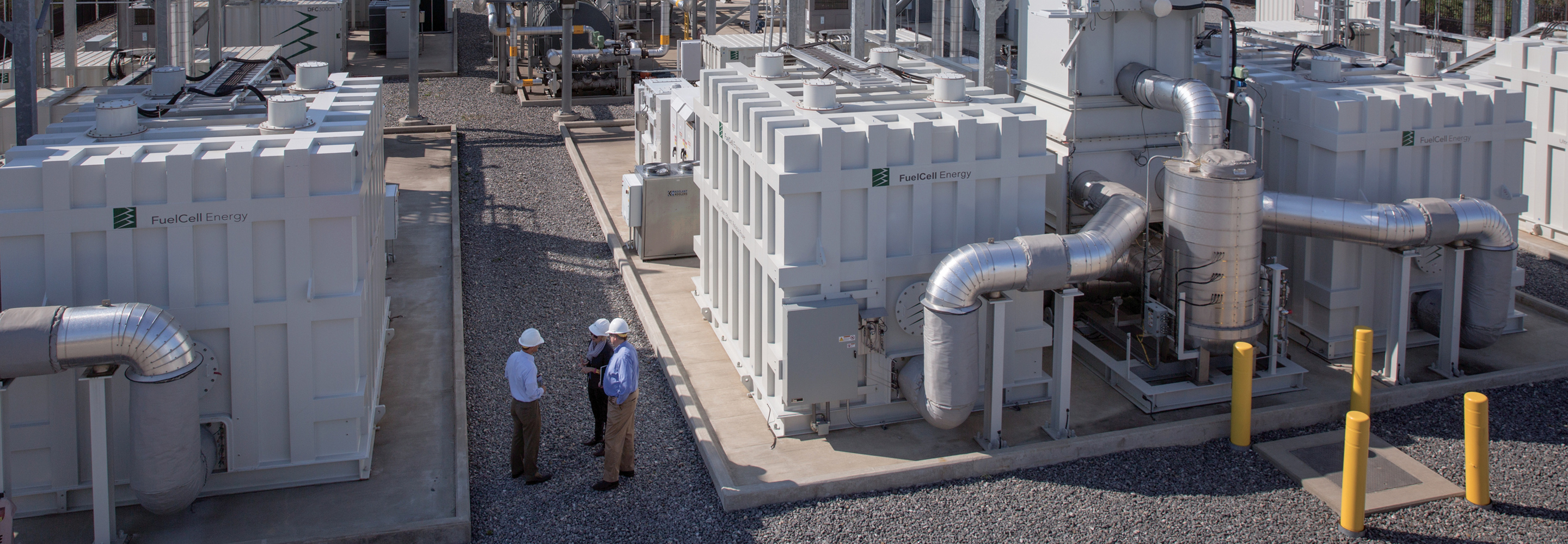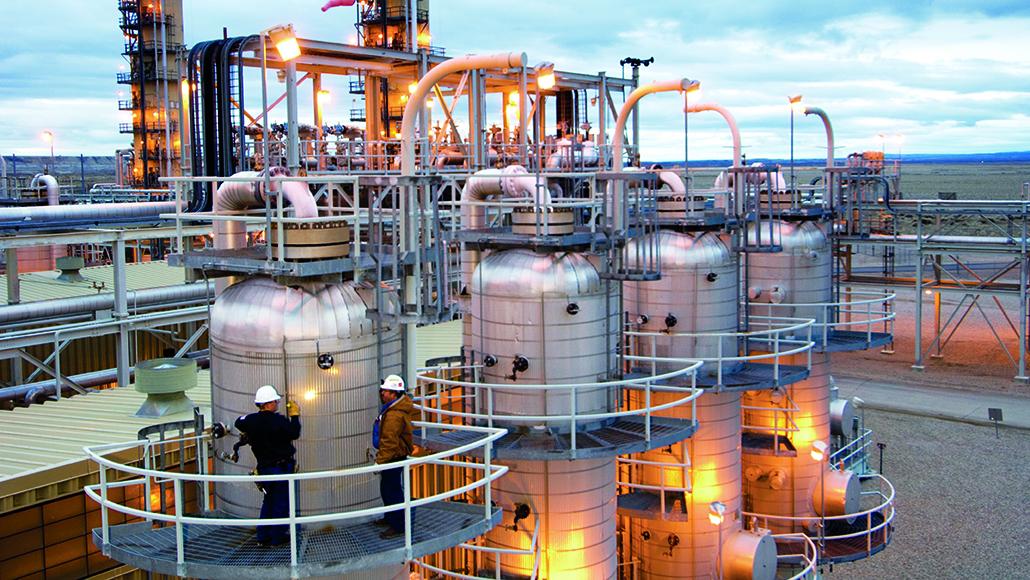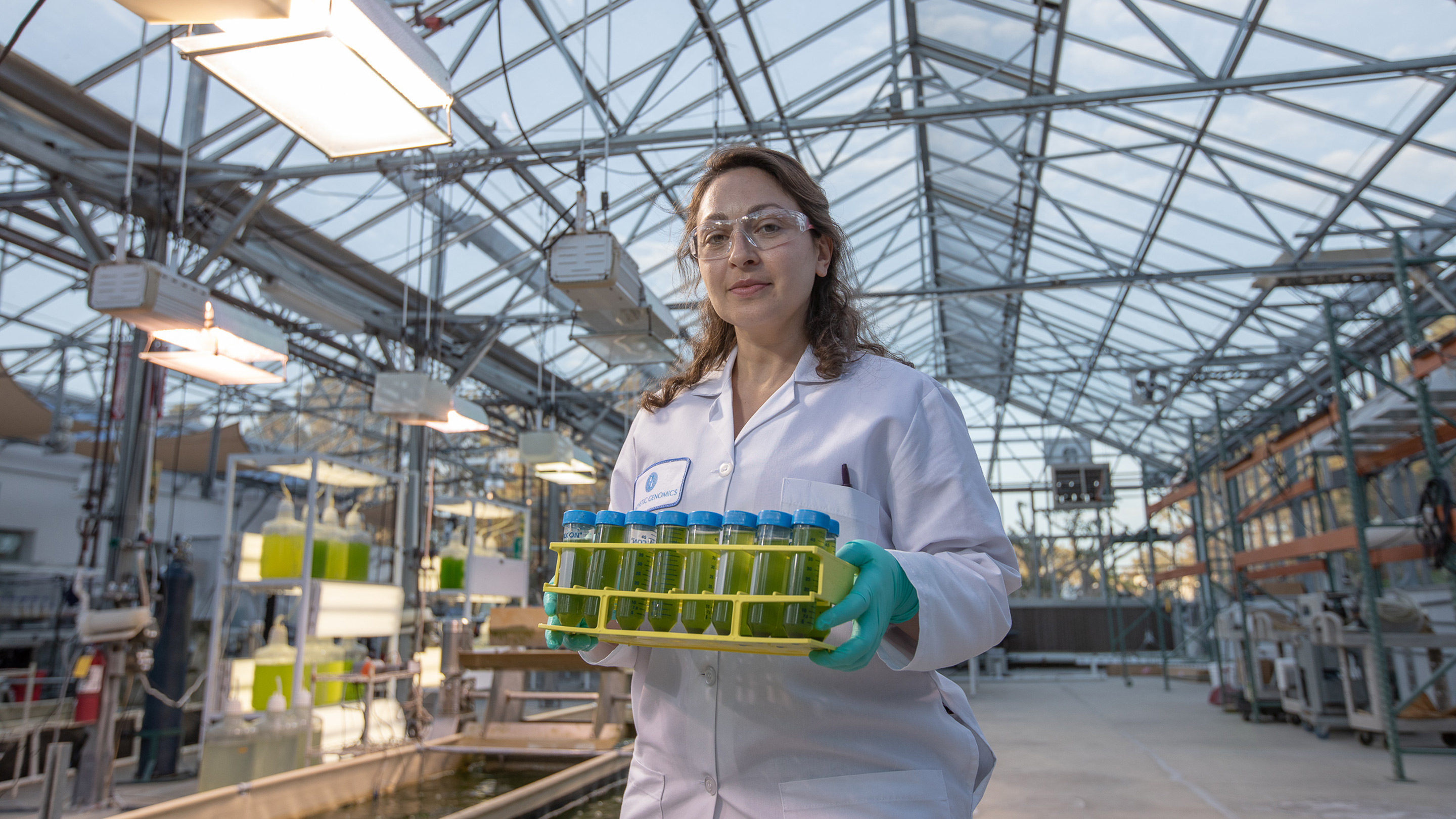
Advanced carbonate fuel cell technology in carbon capture and storage
In this article
ExxonMobil and FuelCell Energy, Inc. partnership
For three decades, ExxonMobil has been a leader in carbon capture and storage applications. In 2017, ExxonMobil captured 6.6 million metric tons of CO2 for storage — the equivalent of eliminating the annual greenhouse gas emissions of more than 1 million passenger vehicles.
The greatest opportunity for future large-scale deployment of CCS may be in the natural gas power generation sector, since capturing CO2 from coal-fired generation is roughly twice as expensive. In 2016, ExxonMobil announced a partnership with FuelCell Energy, Inc. to advance new technology that may substantially improve CCS efficiency, effectiveness and affordability for large natural gas-fired power plants.
Our research indicates that by applying this new technology, more than 90 percent of a natural gas power plant’s carbon dioxide emissions could be captured.
Carbonate fuel cell technology: better efficiency, more power and less carbon dioxide
Scientists at ExxonMobil and FuelCell Energy, Inc. are jointly pursuing new technology that could reduce the costs associated with current CCS processes by increasing the amount of electricity a power plant produces while simultaneously delivering significant reductions in carbon dioxide emissions. At the center of these efforts is a carbonate fuel cell.
Laboratory tests have indicated that applying carbonate fuel cells to natural gas power generation could capture carbon dioxide more efficiently than current, conventional CCS technology. In fact, our research indicates that by applying this new technology, more than 90 percent of a natural gas power plant’s carbon dioxide emissions could be captured.
During conventional carbon capture processes, a chemical reacts with the carbon dioxide to extract it from power plant exhaust. Steam is then required to release the carbon dioxide from the chemical — steam that would otherwise be used to move a turbine. The effect is to decrease the amount of electric power the turbine can generate.
Using fuel cells to capture carbon dioxide from power plants can result in a more efficient separation of carbon dioxide from power plant exhaust with an increased output of electricity. Power plant exhaust is directed to the fuel cell, replacing air that is normally used in combination with natural gas during the fuel cell power generation process. As the fuel cell generates power, the carbon dioxide becomes more concentrated, allowing it to be more easily and affordably captured from the cell’s exhaust and stored.
ExxonMobil’s research indicates that a typical 500 megawatt (MW) power plant using a carbonate fuel cell may be able to generate an additional 120 MW of power, while current CCS technology actually consumes about 50 MW of power.
Next steps in fuel cell technology development
ExxonMobil has been assessing a number of carbon capture technologies for many years and believes that carbonate fuel cell technology offers great potential. The technology’s capability has been tested in the laboratory, and data from those simulations is currently under analysis. Further development will involve a more detailed examination of each component of the system and optimization of the system as a whole.
The scope of the agreement between ExxonMobil and FuelCell Energy, Inc. will initially focus on better understanding the fundamental science behind carbonate fuel cells and how to increase efficiency in separating and concentrating carbon dioxide from the exhaust of natural gas-fueled power turbines.
Related content

Cleaner power: reducing emissions with carbon capture and storage
For more than 30 years, ExxonMobil engineers and scientists have researched, developed and applied technologies that could play a role in the widespread deployment of carbon capture and storage.
Innovating energy solutions: Research and development highlights
R&D has been part of ExxonMobil’s DNA since our company began more than 135 years ago. Our innovations have helped provide the energy fundamental to modern life – from the clean, efficient fuels that power today’s transportation to the natural gas that provides light and heat to homes and businesses.
Today, our world faces a dual challenge: meeting growing demand for energy while also reducing environmental impacts, including the risks of climate change. ExxonMobil is committed to doing our part.






